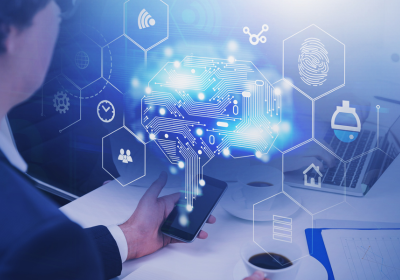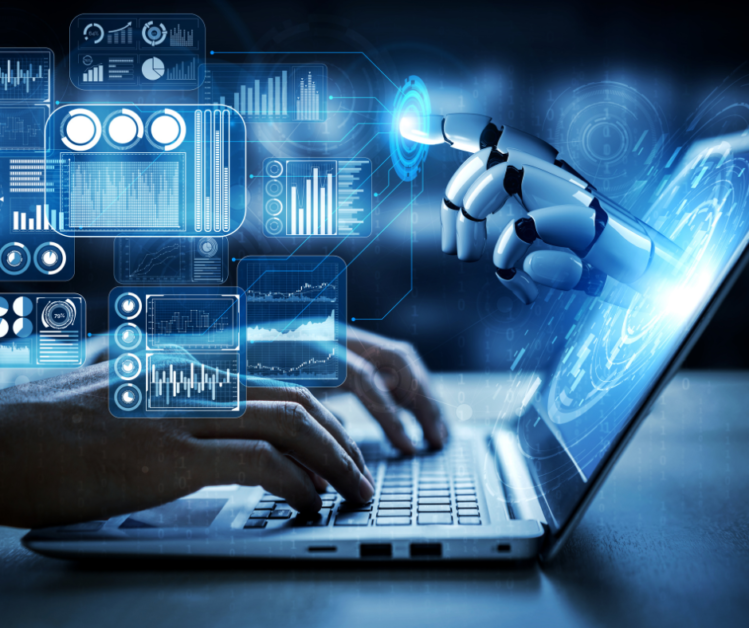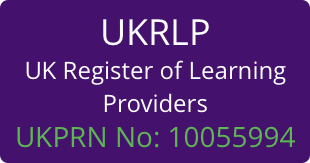
Learning and development (L&D) has undergone significant changes over the past decade, driven by technological advancements, evolving workplace needs, and shifting learner expectations. These changes are likely to continue as artificial intelligence and machine learning become more and more common place.
One of the most notable changes that we’ve seen in L&D is a shift from a focus on compliance training to training that focuses on growth and upskilling, fostering a culture of continuous learning and development. Learning experiences are much more aligned to an individual’s needs and career goals with personalised learning paths, using adaptive learning platforms that adjust content and difficulty based on the learner. These learning experiences require much more active learner engagement and collaboration, and less passive learning, where there is one-way instruction. Staff are encouraged to take ownership for their learning journeys, empowering them to take control and seek out relevant development opportunities. There is much more use of social media platforms and online communities for knowledge sharing and peer-to-peer learning.
L&D has needed to adjust to employers increased recognition of the importance of soft and social emotional skills, a set of abilities that influence how we think, feel, and behave in relation to ourselves and others in the workplace. These are not as straight forward to assess as technical knowledge and expertise, which are of course still extremely important.

Soft and social emotional skills are becoming increasingly crucial for success in today’s dynamic and ever-changing workplace, and are most appropriately assessed through observation in the workplace.
We have certainly seen much more of a strategic focus on learning and development, with more L&D professionals partnering closely with business leaders to ensure training initiatives support organisational objectives, and prepare the workforce for evolving job roles. In 2019 approximately 40% of businesses said that their learning and development aligned with their company’s overall priorities1 whereas in 2023 CIPD found that it is 67%2. It is without doubt that the most effective companies take a strategic approach to modelling employee competency and capability against the organisation’s strategic direction. Then evaluate the effectiveness of learning and development programs to meet the required competencies and capabilities.

So how does artificial intelligence, AI, and machine learning fit into the picture? Well, you’ll have heard more and more about them over the last few years, and how they are impacting L&D. A recent article that I wrote, ‘Is Artificial Intelligence the Answer to Addressing Skills Gaps?’ talks about how AI is being used in learning and development today, with some workplace examples. But, if we look beyond today’s use of AI in L&D:
- Personalise learning
- Automate administrative tasks
- Create virtual reality training materials
- Provide real time feedback and learner insights
- Offer virtual coaching and mentoring
- Provide predictive analytics and skill gap analysis
- Effectively deliver multi-lingual training
- Make self paced and adaptive learning much more effective
What does the future look like? I think that we are going to see the biggest change in personalised learning. An employee will be able to tailor their learning in line with, not just their goals and aspirations, but also their learning style; choosing video over text and audio, or being delivered learning content based on their age, gender and demographic. Already some online training, such as the Kallidus suite of courses, can be configured by the learner to run at a faster or slower speed, but this functionality will become much more sophisticated. An employee’s training will not just be adaptive in the way that we see it today, the content presented to them will be based on AI created analytic insights of the learner’s learning style, past interactions with learning programmes, their performance in assessments, their engagement levels etc. AI can create adaptive learning pathways that dynamically adjust to each learner’s progress, so as they demonstrate mastery of certain concepts, AI can move them to more advanced material, while focusing on remedial instruction for areas of difficulty. By understanding any learners’ unique needs and preferences, AI can tailor educational content, pace, and difficulty levels to each individual. This personalised approach ensures that learners receive the most appropriate and challenging content, fostering effective learning.
In addition we will see AI in learning and development:
· Identify hidden patterns and trends by analysing large datasets to identify hidden patterns and trends in learner performance, to help gain deeper insights into an employee’s learning patterns.
· Predict learning outcomes by using predictive modeling techniques to forecast individual learning outcomes, allowing L&D to proactively identify employees at risk of not developing as they require
them to and providing targeted interventions.
· Incorporate more gamification into learning experiences, making them more engaging and motivating for employees to improve learning outcomes.
· Recommend further training resources, learning activities or social learning platforms based on the employee’s analytical insights to develop their knowledge and skills.
· Continually adapt learning and development to an
employee’s progress, changes in learning preferences and their job roles.
According to a recent report by Gartner, 75% of venture and capital investors will be using AI-backed tools for their data analytics and other information by 2025. This suggests that the adoption of AI in L&D is likely to accelerate in the coming years. Other factors also mean that the adoption of artificial intelligence (AI) in learning and development (L&D) is expected to grow rapidly over the next few years, these include:
-
- Increasing availability of affordable AI tools, as prices are dropping making them more accessible to businesses of all sizes.
-
- Growing sophistication of AI algorithms enables them to perform more complex tasks, such as even better personalised learning, adaptive learning, and content generation.
-
- Increasing demand for L&D solutions that can meet the needs of a changing, diverse and global workforce.
AI is revolutionising the way we approach learning and development and will continue to do so at a rapid rate over the next decade.
Author: Carolyn Lewis, Head of Business Development
You may also like:
Is Artificial Intelligence the Answer to Addressing Skills Gaps?
Choosing the Right Technology Solution for HR and L&D in SMEs
Are a Lack of Digital and Pedagogical Skills Negatively Impacting Learners?
The Impact of e-Learning Growth on Workplace Learning
The multi award winning eLearning Marketplace is the UK’s largest provider of immediate access online training with customers in over 50 countries. Courses range from compliance and professional development to vocational qualifications up to Level 7. We work with subject matter experts and large e-learning publishers to bring our customers a unique catalogue of over 3500 online courses with a price match guarantee. Customers have free private use of cloud based software to track, manage and evidence staff training, allocate licences to users and run sophisticated reporting.
Not all courses are on the website so if you can’t find what you are looking for please do get in touch at enquiries@elearningmarketplace.co.uk
Sources:
1. https://www.mckinsey.com/capabilities/people-and-organizational-performance/our-insights/the-essential-components-of-a-successful-l-and-d-strategy
2. https://www.cipd.org/uk/knowledge/reports/learning-at-work/







 UK: 0844 854 9218 | International: +44 (0)1488 580017
UK: 0844 854 9218 | International: +44 (0)1488 580017








